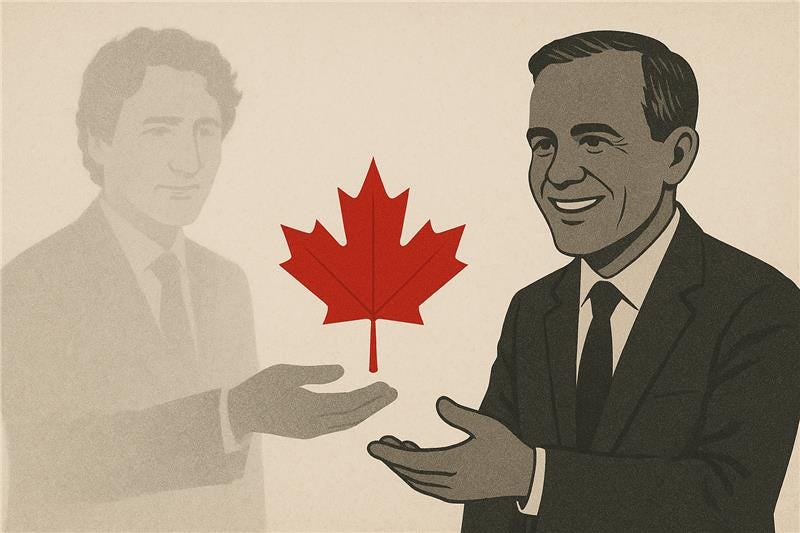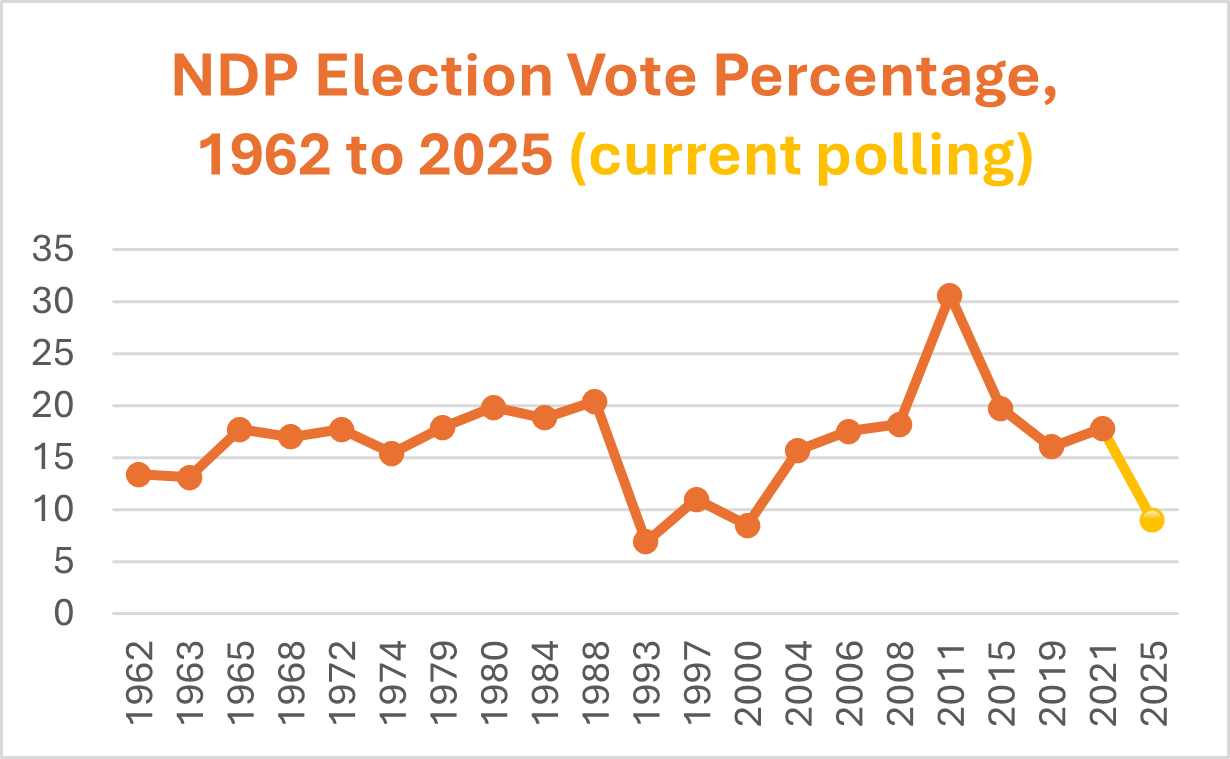Changing the Face of the Campaign
In the lead-up to the 2015 election, the third place Liberals had 36 MPs. To fill the slate of 338 ridings, this meant a large number of new candidates had to be recruited along with some returning faces who were defeated in 2011. Most had no profile at the national level. Most were running in a federal election for the first time, many with brand new volunteers. On the other hand, almost every Canadian knew Justin Trudeau, since he had grown up in the spotlight. When he became leader, his team transformed the organization of the Liberal Party, modernizing it, and all the while featuring the “Team Trudeau” brand prominently, whether on the templates offered for local candidate signs or campaign literature and social media content. There was an obvious advantage to be had in featuring Justin Trudeau – his brand helped local candidates win.
When the Trudeau brand suffered over the next two elections, some local candidates—especially in rural ridings with narrow margins—would choose to go their own way to give themselves the distance they believed they needed to differentiate themselves and show that they were an independent voice for their community. This may be done through covering up the Trudeau logo on their signs, not including his name or picture on their communications, not sharing social media content from their party or leader, or putting a larger focus on their local policy priorities than national ones. With Trudeau’s popularity at all-time lows leading up to his resignation, this had even campaigns in what were normally strong Liberal ridings positioning themselves independently of the leader – ready to slap a Canadian flag overtop of any hint of “Trudeau.”
The Carney Factor
The entrance of Mark Carney into the equation has turned this local candidate calculation on its head. While not flashy or with the brand recognition of Trudeau, his quiet confidence at a time of great instability from the U.S. tariff threat has Carney’s popularity polling even higher than the new heights the Liberal Party has been able to gain during the leadership transition. This will pay dividends for Liberal messaging, since it will make it much more likely for local candidates to embrace and amplify the messaging coming from the Carney and Liberal machines. In turn, the consistency this brings will make it much more likely for these messages to reach voters in the party’s attempt to win their vote. Across the 343 ridings, the Liberals will be rowing in the same direction in their version of a “Team Canada” approach.
NDP Candidates Singing Their Own Tunes
If the Liberals have been able to unite under a new leader who gives them the confidence that he will help them win, the same cannot be said for the NDP in this election. Under Jagmeet Singh, the NDP is currently polling at almost record lows. This has local candidates—particularly in British Columbia where the NDP is currently set to lose many seats—running campaigns that put a lot of distance between themselves and the leader. Taylor Bachrach in Northern BC has differentiated himself online through a lack of Singh or NDP branding, while for Laurel Collins in Victoria, the “Singh” brand is difficult to find, as she promotes endorsements from party luminaries such as former NDP MP Murray Rankin.
While the Liberals’ “Canada Strong” and the Conservatives’ “Canada First” slogans try to meet the moment of national solidarity against the Trump threat, the NDP has lacked a consistent national message that could bring their team together in a way that will resonate with voters. There is still runway left in this campaign for erstwhile NDP supporters who have turned to Mark Carney’s Liberals to feel “safe enough” to go back to the NDP, but if the numbers hold, the NDP could end up in the single digits in terms of vote percentage. Looking at electoral history, this low level of support only occurred in the 1990s—notably when Jean Chretien’s Liberals secured three straight majority governments.
Poilievre Brand Resonating with the Base
For the Conservatives, Pierre Poilievre still features prominently in local campaigns. While he polls lower in support than his party nationally, his brand of conservativism has been giving energy to the already strong Conservative base of support. And therein lies the challenge and risk at a time when the Conservatives desperately need to break through in suburban Ontario ridings that they have not been able to win since they last formed government. Former Conservative Leader Erin O’Toole believed that moderation of the Conservative message was the key to opening those doors, but he was still not able to crack through. With the NDP vote so far collapsing in 2025 in favour of the Liberals, it remains to be seen if Poilievre’s more sharply conservative message can do the job, or if it instead will backfire by pushing NDP supporters into the Liberal camp to keep Poilievre out of government.
Star Candidates of the Day: Local Appeal
Strong local candidates who are well-known in their community can make the difference in tight races. The Liberals have been able to attract former cabinet minister and current Mayor of Edmonton Amarjeet Sohi (Edmonton Southeast, Alberta) back into the race after he lost in 2019. With three new ridings added in Alberta, redistribution means that Sohi will not be running against Conservative MP Tim Uppal, whom he unseated in 2015, but who unseated Sohi in return in 2019. At current levels of support, Sohi appears poised to return to the House of Commons, which would force the City of Edmonton to find a new mayor.
A few short months ago former Toronto TTC Chair and City Councillor for Eglinton—Lawrence Karen Stintz (Eglinton—Lawrence, Ontario) looked like a lock to bring the overlapping federal seat back into the Conservative fold, particularly with incumbent Liberal MP Marco Mendicino not running again. Polls currently put her behind her Liberal oppponent Vince Gasparro, a finance specialist who has worked for Toronto Mayor John Tory and former Prime Minister Paul Martin. If the distance between the leading Liberals and Conservatives widens too much, than even the local star power that Stintz brings would not be enough to close the gap.



